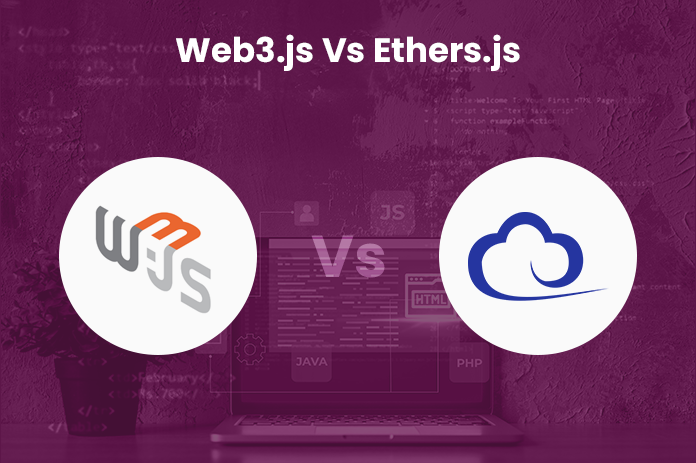Web3.js Vs Ethers.js – Which One is Better

It seems that the world of blockchain and cryptocurrency is constantly evolving, with new tools and technologies emerging to support this digital landscape.
In the matter of interacting with the Ethereum blockchain, two prominent JavaScript libraries, Web3js and Ethersjs, have gained significant attention.
Both offer developers powerful capabilities for building decentralized applications, but which one is better suited for your needs?
In this blog post, we will research into the differences between Web3js and Ethersjs to help you make an informed decision on which one may be the right choice for your project.
Web3.js
With the rise of blockchain technology and the growing popularity of decentralized applications, Web3.js has emerged as a crucial tool for interacting with the Ethereum blockchain.
Developed by the Ethereum Foundation, Web3.js was first introduced in 2014 as a JavaScript library that provides easy access to Ethereum’s decentralized platform.
Key Features and Functionalities
- Interacting with smart contracts
- Reading and writing data on the blockchain
- Listening to events emitted by smart contracts
- Handling transactions securely
The key features and functionalities of Web3.js are designed to simplify the process of building decentralized applications and interacting with smart contracts on the Ethereum blockchain. This library plays a vital role in enabling developers to create secure and efficient blockchain-based applications.
The community-driven nature of Web3.js ensures that it stays up-to-date with the evolving needs of developers and users in the decentralized ecosystem.
Ethers.js
On a journey through the world of Ethereum development tools, one cannot overlook the significance of Ethersjs.
Originally created by Richard Moore in 2018, Ethers.js has since evolved into a powerful JavaScript library that simplifies interaction with the Ethereum blockchain.
Core Features and Capabilities
One of the key features of Ethers.js is its comprehensive set of tools for interacting with smart contracts, managing wallets, and sending transactions on the Ethereum network.
It provides a well-documented API that developers can leverage to build decentralized applications with ease.
Ethers.js offers a wide range of functionalities, including the ability to generate cryptographic keys, sign transactions, and interact with smart contracts deployed on the Ethereum blockchain.
Its modular architecture and extensive documentation make it a popular choice among Ethereum developers for building decentralized applications.
Web3.js Vs Ethers.js Comparative Analysis
When it comes to developing dApps on the Ethereum blockchain, developers often have to choose between two popular JavaScript libraries: Web3.js and Ethers.js.
Both libraries offer a range of functionalities that are essential for interacting with the Ethereum blockchain, but they have some key differences that developers should consider before choosing one for their projects.
Key Features
- Web3.js: Web3.js offers a comprehensive set of functions for interacting with Ethereum, including support for both Ethereum 1.0 and Ethereum 2.0 chains. It also provides tools for working with smart contracts, handling events, and managing accounts.
- Ethers.js: Ethers.js focuses on providing a more developer-friendly API with a strong emphasis on type safety and modularity. It offers support for Ethereum 1.0 and 2.0 chains, as well as tools for working with smart contracts and managing accounts.
Performance and Scalability
- Web3.js: While Web3.js is a mature library with a wide range of features, some developers have raised concerns about its performance and scalability. In some cases, Web3.js can be slower and less efficient than Ethers.js, especially when working with large amounts of data.
- Ethers.js: Ethers.js is known for its performance and scalability, thanks to its streamlined API and optimized codebase. Developers often find that Ethers.js offers faster transaction speeds and better resource management compared to Web3.js.
Community Support and Documentation
- Web3.js: Web3.js has a large and active community of developers who contribute to its ongoing development and maintenance. However, some developers have noted that the documentation can be confusing and outdated at times.
- Ethers.js: Ethers.js has quickly gained popularity for its clear and extensive documentation, which makes it easy for developers to get started with the library. The Ethers.js community is growing rapidly, with regular updates and improvements to the library.
To Wrap up
On the whole, choosing between Web3.js and ethers.js ultimately depends on the specific requirements of your decentralized application.
Web3.js has been around longer and is more established, making it a popular choice for developers. On the other hand, ethers.js is known for its simplicity and developer-friendly API.
Both libraries have their strengths and weaknesses, so it is necessary to evaluate your project’s needs and capabilities before making a decision.
Whichever you choose, both Web3.js and ethers.js are powerful tools that can help you interact with the Ethereum blockchain effectively.
